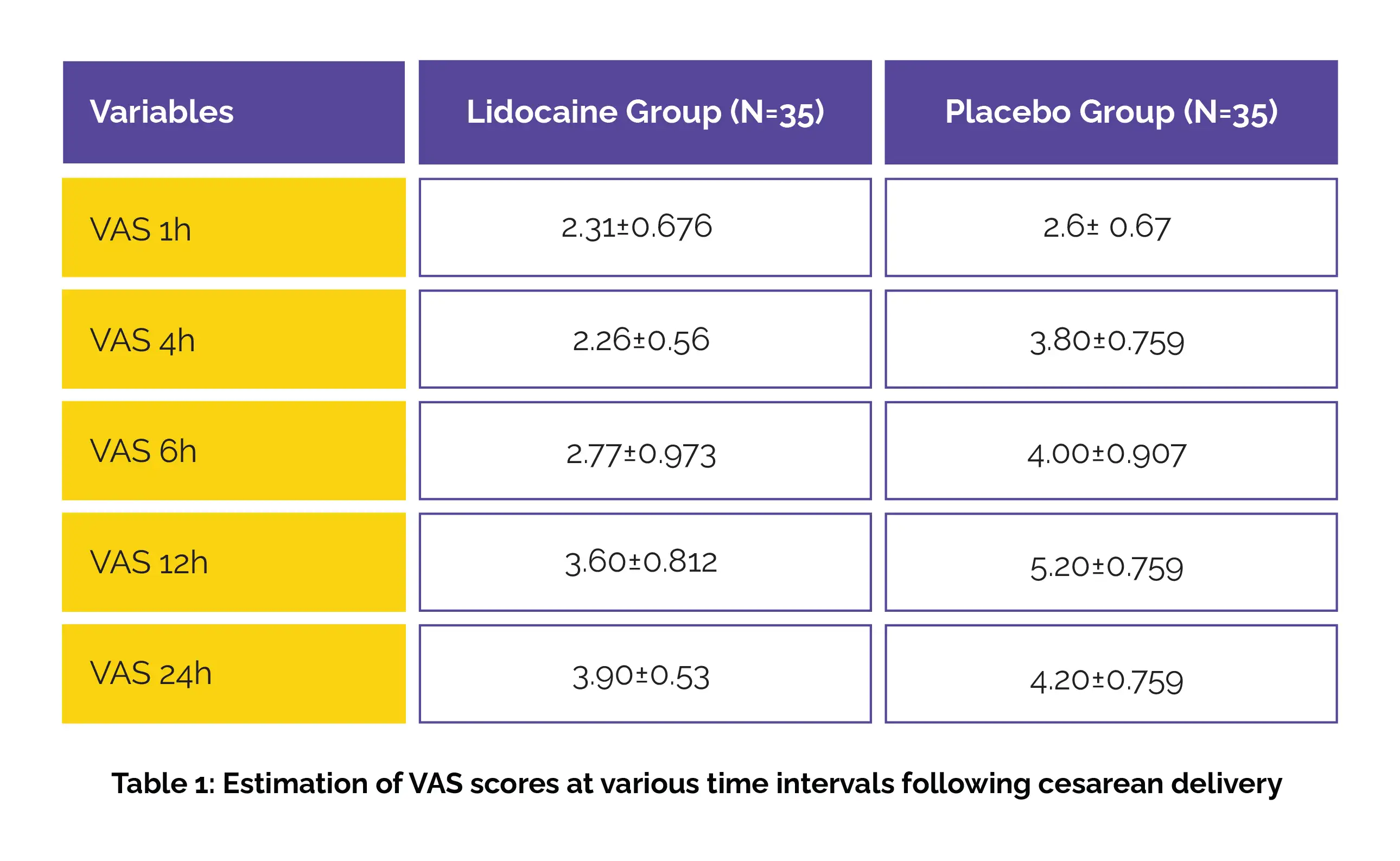Categories
Change Password!
Reset Password!


Opting for intraperitoneal Lidocaine instillation proves to be a simple, safe, and cost-effective strategy, offering the prospect of maximizing patient satisfaction in the realm of post-cesarean analgesia.
In a pioneering effort to address the persistent challenge of inadequate pain control following cesarean deliveries, a recent study has uncovered promising results for Lidocaine infusion into the peritoneum. According to the findings, intraperitoneal Lidocaine instillation presents a simple, secure, and economically viable alternative capable of optimizing overall patient contentment in the realm of post-cesarean pain management.
This randomized, placebo-controlled, triple-blinded trial involved 70 pregnant women undergoing elective cesarean sections. Volunteers were segregated into two groups: the Lidocaine group, consisting of 35 volunteers who received 50 ml of 2% Lidocaine intraperitoneally, and the Placebo group, comprising 35 volunteers who were administered 50 ml of normal saline intraperitoneally. The key focus of the study was to assess postoperative pain levels within the initial 24 hours following a cesarean delivery, measured through a visual analogue scale (VAS).
Secondary outcomes examined included the timing of mobilization and breastfeeding initiation, potential medication side effects, the duration of hospital stay, and the level of patient satisfaction concerning pain management. Key findings of the study included a remarkable reduction in VAS scores at 4, 6, and 12 hours post-cesarean section among the Lidocaine group compared to the Placebo group, as illustrated in Table 1:

Moreover, intraperitoneal Lidocaine was considerably superior to the placebo in terms of patients' overall satisfaction with pain alleviation. A staggering 94.3% of subjects in the Lidocaine group expressed satisfaction, in stark contrast to 57.1% in the placebo group. No profound differences were noted between the examined groups in terms of the occurrence of postoperative complications, such as postpartum fever and paralytic ileus, or adverse effects related to the administered drugs. Intriguingly, intraperitoneal Lidocaine instillation not only proved effective in pain control but also exhibited simplicity, safety, and cost-effectiveness. The implications of this research are substantial, suggesting that intraperitoneal Lidocaine instillation could revolutionize post-cesarean analgesia.
The Egyptian Journal of Hospital Medicine
Intraperitoneal Lidocaine Instillation for Postoperative Pain Relief after Cesarean Delivery
Dayer MZ et al.
Comments (0)